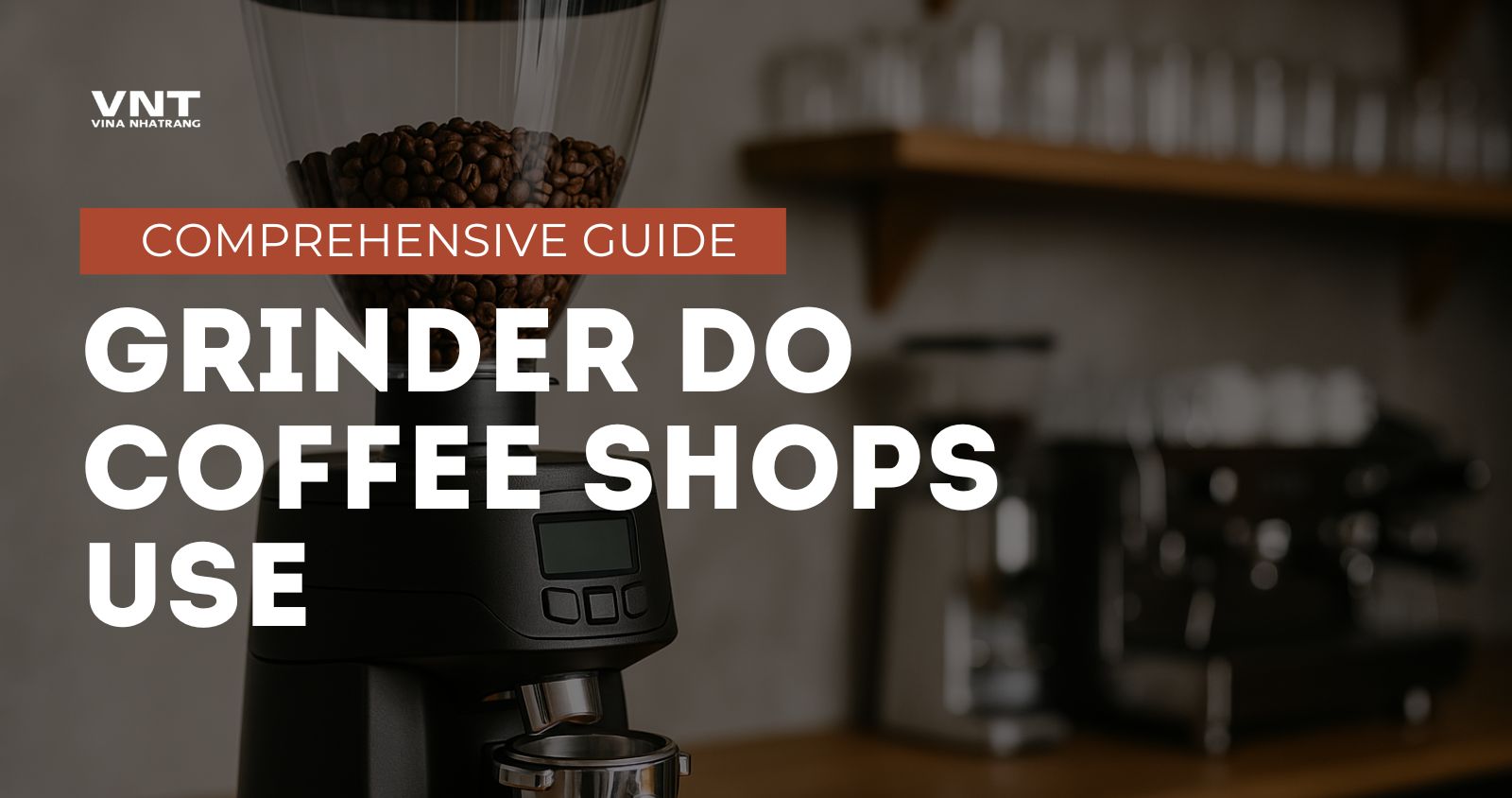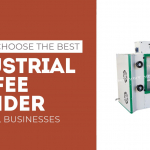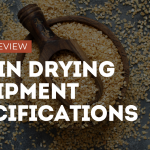In the complex ecosystem of a coffee shop, few pieces of equipment are as critical as the coffee grinder. While espresso machines often steal the spotlight with their gleaming exteriors and theatrical steam wands, professional baristas know that the humble grinder is where coffee quality truly begins. The difference between a mediocre cup and an exceptional one often comes down to grinding precision, consistency, and control.
For aspiring cafe owners, experienced baristas, or coffee shop operators looking to upgrade their equipment, understanding commercial coffee grinders is essential. This comprehensive guide explores the types of grinders coffee shops rely on, profiles leading models, and offers expert guidance on selecting the right grinder for your specific cafe environment.
Why Are Coffee Grinders So Important to Cafe Success?
Before diving into specific models, it’s worth understanding why coffee grinders deserve such careful consideration:
- Extraction foundation: Grind consistency directly impacts extraction, which determines flavor balance, sweetness, acidity, and mouthfeel
- Workflow efficiency: A reliable, fast grinder keeps service moving, especially during rush periods
- Menu versatility: Different brewing methods require different grind profiles, affecting what you can offer
- Customer experience: Freshly ground coffee produces aromatic compounds that enhance the sensory experience
- Financial investment: Quality commercial grinders represent a significant investment that affects daily operations for years
As Nick Cho, co-founder of Wrecking Ball Coffee Roasters, famously stated: “If I had to choose between an excellent grinder and a mediocre espresso machine or a mediocre grinder and an excellent espresso machine, I’d choose the excellent grinder every time.”
What Types of Commercial Coffee Grinders Do Cafes Use?
Coffee shops typically employ several types of grinders, each optimized for specific brewing methods and operational needs:
Espresso Grinders
Espresso preparation demands extraordinary precision, as the pressurized brewing method amplifies both positive qualities and flaws in the grind profile. Commercial espresso grinders fall into three main categories:
Doser Espresso Grinders
These traditional workhorses grind coffee into a dosing chamber, where the barista pulls a lever to dispense approximate doses into the portafilter.
Advantages:
- Typically more affordable
- Simpler mechanics mean fewer potential breakdowns
- Can pre-grind limited quantities during rush periods
Disadvantages:
- Less precise dosing
- Coffee sits in the dosing chamber, losing freshness
- More coffee waste from grounds left in the doser
On-Demand (Doserless) Espresso Grinders
These modern grinders dispense coffee directly into the portafilter when activated, grinding only what’s needed for each shot.
Advantages:
- Maximum freshness with no pre-ground coffee
- More precise time-based dosing
- Reduced waste
- Cleaner workflow with less coffee scattered around
Disadvantages:
- Often more expensive
- Cannot pre-grind during rushes
- Some models struggle with static buildup
Weight-Based Espresso Grinders
The newest evolution in espresso grinding, these high-tech models use integrated scales to dispense coffee by precise weight rather than time.
Advantages:
- Ultimate precision in dosing
- Adapts to density changes between coffee varieties
- Reduces training time for consistent shots
- Minimizes waste from over-dosing
Disadvantages:
- Premium price point
- More complex components that may require servicing
- Some models have longer grinding cycles
Batch Brew/Filter Coffee Grinders
For drip coffee, batch brewers, and other filter methods, cafes need grinders capable of handling larger volumes with a coarser, but still consistent, grind profile.
Key characteristics:
- Larger burr sets (typically 75-120mm)
- Higher capacity hoppers
- Faster grinding speeds
- Coarser grind range optimization
- Often feature bag-filling capabilities
Common applications:
- Morning rush batch brewing
- Coffee-by-weight retail sales
- Pour-over bar service
- Cold brew preparation
Multi-Purpose Grinders
Some cafes, especially smaller operations with space constraints, opt for grinders that can handle multiple brewing methods with adjustable settings.
Advantages:
- Space and cost efficiency
- Menu flexibility without multiple grinders
- Simpler training for staff
Disadvantages:
- Compromise in optimization for specific methods
- Constant readjustment between brewing methods
- Typically slower workflow than dedicated grinders
Specialty/Single-Dose Grinders
Third-wave cafes focused on rotating single-origin offerings often incorporate specialty grinders designed for single-dose grinding with minimal retention.
Key characteristics:
- Minimal ground retention between doses
- Easy adjustability between coffee varieties
- Often feature alignment adjustments for burr optimization
- Superior particle size distribution
- Sometimes use innovative burr designs (flat, conical, or hybrid)
Which Grinder Models Do Professional Coffee Shops Use Most?
The following profiles cover the most widely adopted commercial grinders across different cafe environments:
Mahlkönig EK43
Overview: Originally designed for spice grinding, the EK43 revolutionized filter coffee preparation in specialty cafes with its exceptional particle size consistency and minimal fines production.
Specifications:
- 98mm flat burrs
- 1,100-1,300 RPM motor
- Stepless grind adjustment
- 3-5g retention
- Single and double shot options
Ideal environment: Multi-roaster specialty cafes, pour-over focused operations, cafes that sell retail coffee
Price range: $2,500-$3,200
Distinctive features: The EK43’s grinding efficiency creates exceptionally “clean” cup profiles that highlight clarity and separation of flavor notes. The iconic design has become synonymous with specialty coffee.
Cafe feedback: “The EK changed our entire approach to coffee service. We can offer the same coffee for both espresso and filter with incredible results, though workflow takes practice.” – Emma Chen, Counter Culture Coffee
Mahlkönig E65S GbW
Overview: This weight-based grinder has become the gold standard for high-end espresso service, combining precision dosing with workflow efficiency.
Specifications:
- 65mm flat burrs
- Built-in precision scale
- Programmable profiles for different coffees
- Digital display with intuitive interface
- 1-2g retention
Ideal environment: High-end specialty cafes, espresso-focused operations with multiple coffee offerings
Price range: $3,000-$3,800
Distinctive features: The grind-by-weight technology ensures consistent dosing regardless of bean density or ambient conditions. Three programmable profiles allow quick switching between different coffees.
Cafe feedback: “The consistency between shots is remarkable. Our training time for new baristas has decreased significantly, and our coffee waste has dropped by almost 30%.” – Marcus Lopez, Blue Bottle Coffee
Nuova Simonelli Mythos Two
Overview: Purpose-built for high-volume espresso service, the Mythos Two combines speed with temperature stability through its innovative Clima Pro technology.
Specifications:
- 85mm titanium-coated burrs
- Active temperature control system
- Clump-crushing technology
- Digital display with shot counter
- 2-3g retention
Ideal environment: High-volume specialty cafes, cafes in variable climate conditions
Price range: $2,800-$3,400
Distinctive features: The Clima Pro system maintains consistent burr temperature, preventing grind size drift throughout busy service periods. The vertical burr alignment reduces counter space requirements.
Cafe feedback: “In our busy downtown location, we needed something that could handle 300+ espresso drinks daily without variation. The Mythos delivers that reliability hour after hour.” – Sarah Kemp, Stumptown Coffee
Mazzer Robur S
Overview: A workhorse conical burr grinder found in thousands of cafes worldwide, known for its reliability and distinctive espresso profile.
Specifications:
- 71mm conical burrs
- Electronic dosing
- Stepless micrometrical grind adjustment
- 400-500 RPM motor
- 3-5g retention
Ideal environment: Traditional Italian-style espresso bars, high-volume cafes prioritizing chocolate and body-forward espresso
Price range: $2,300-$2,700
Distinctive features: Conical burrs produce a grind profile that many baristas associate with “traditional” espresso characteristics: heavy body, chocolate notes, and forgiving extraction.
Cafe feedback: “We’ve had our Roburs for over five years with minimal maintenance beyond regular cleaning and burr replacement. They’re the Toyota Camry of espresso grinders.” – Anthony Richards, Intelligentsia Coffee
Ditting 804 Lab Sweet
Overview: The industry standard for batch brewing in specialty cafes and roasteries, known for exceptional particle uniformity at medium to coarse settings.
Specifications:
- 80mm flat cast steel burrs
- 600-700 RPM motor
- Cast aluminum housing
- Stepless grind adjustment
- Bag-filling capability
Ideal environment: Cafes with significant batch brew or retail coffee sales
Price range: $2,100-$2,600
Distinctive features: The “Lab Sweet” burr set is specifically designed to enhance sweetness in filter coffee. The robust construction ensures years of reliable service.
Cafe feedback: “Our batch brewer combined with the Ditting gives us incredible consistency across our house blend. We can dial in once in the morning and trust it all day.” – James Morrison, Panther Coffee
Fellow Ode Brew Grinder Commercial
Overview: A new entrant that’s gaining popularity in cafes focused on manual brewing methods, offering cafe-quality performance in a compact footprint.
Specifications:
- 64mm flat burrs
- Single-dose design
- Ultra-low retention
- 31 grind settings
- Compact footprint
Ideal environment: Small cafes, brew bars, multi-method cafes with space constraints
Price range: $800-$1,000 for commercial model
Distinctive features: Specifically designed for filter coffee with no espresso capabilities, the Ode focuses on doing one thing exceptionally well. The commercial model offers enhanced durability for cafe settings.
Cafe feedback: “For our pour-over bar, the Ode gives us the quality we need without the counter space or expense of larger grinders. It’s perfect for our rotating single-origin program.” – Mikayla Wu, Onyx Coffee Lab
Commercial Coffee Grinder Comparison Table
| Grinder Model | Burr Size & Type | Ideal Use Case | Grind Speed | Retention | Price Range |
|---|---|---|---|---|---|
| Mahlkönig EK43 | 98mm Flat | Filter/All-purpose | 18-22g/sec | 3-5g | $2,500-$3,200 |
| Mahlkönig E65S GbW | 65mm Flat | Espresso | 4-7g/sec | 1-2g | $3,000-$3,800 |
| Nuova Simonelli Mythos Two | 85mm Titanium Flat | High-volume Espresso | 8-10g/sec | 2-3g | $2,800-$3,400 |
| Mazzer Robur S | 71mm Conical | Traditional Espresso | 3.5-4.5g/sec | 3-5g | $2,300-$2,700 |
| Ditting 804 Lab Sweet | 80mm Cast Steel Flat | Batch Brew/Retail | 15-18g/sec | 2-4g | $2,100-$2,600 |
| Fellow Ode Commercial | 64mm Flat | Manual Brew Methods | 3-4g/sec | <0.5g | $800-$1,000 |
| Victoria Arduino Mythos One | 75mm Titanium Flat | High-volume Specialty | 7-9g/sec | 1-3g | $2,400-$2,900 |
How Do Coffee Shops Choose the Right Grinder?
Selecting commercial coffee grinders involves balancing several key considerations:
Business Volume and Customer Throughput
The number of customers served during peak periods directly impacts grinder requirements:
- High-volume cafes (300+ drinks daily) need robust grinders with powerful motors and large burrs to prevent overheating and maintain consistency
- Medium-volume operations (100-300 drinks) can utilize mid-range equipment with attention to workflow efficiency
- Low-volume specialty shops may prioritize quality and precision over speed
Coffee Program Complexity
Your menu and coffee philosophy significantly influence grinder selection:
- Single-coffee programs can optimize one grinder for their house espresso
- Multi-roaster cafes need either multiple grinders or quick-adjusting models with minimal retention
- Diverse brewing methods require different grind profiles, potentially necessitating dedicated grinders
As Scott Lucey of Likewise Coffee explains: “We operate with three distinct grinders: one dedicated to our house espresso, another for rotating single-origin espressos, and a third for all our filter offerings. This setup maximizes both quality and workflow efficiency.”
Space Constraints and Bar Workflow
Physical space and bar design create practical limitations:
- Compact bars may require smaller footprint grinders or multi-purpose models
- High-efficiency workflows benefit from grinders positioned strategically around the bar
- Theater elements might prioritize visually appealing grinders for customer-facing positions
Budget Considerations
Grinder investments should balance upfront costs with long-term value:
- Entry-level commercial setup: $1,500-$3,000 for primary grinders
- Mid-range specialty cafe: $3,000-$7,000 for a complete grinding system
- High-end operation: $7,000-$15,000 for comprehensive grinding capabilities
While premium grinders represent significant investment, they typically offer lower long-term costs through:
- Reduced coffee waste
- Improved extraction efficiency
- Enhanced drink quality
- Greater durability and service life
- Better resale value
Maintenance Requirements and Longevity
Maintenance considerations include:
- Burr replacement intervals (typically 700-1,200 pounds of coffee)
- Accessibility for cleaning (some models require specialized tools)
- Availability of parts and service in your region
- Build quality and durability for long-term operation
What Are the Latest Trends in Commercial Coffee Grinder Technology?
The commercial grinder landscape continues to evolve with several emerging trends:
1. Precision Dosing Technologies
Weight-based grinding has revolutionized espresso preparation, with manufacturers like Mahlkönig, Victoria Arduino, and Weber Workshops developing increasingly sophisticated systems for dose accuracy.
2. Temperature Stability Solutions
As research confirms the impact of temperature on grinding characteristics, innovative cooling systems like those in the Mythos series and Weber EG-1 are becoming standard in high-performance grinders.
3. Single-Dose Workflow Optimization
Influenced by competition baristas and home enthusiasts, cafe-focused single-dose grinders like the Levercraft Ultra and Weber Key are finding their way into progressive cafes prioritizing coffee variety.
4. Sustainability Improvements
Manufacturers are addressing coffee waste through reduced retention designs, standby power reduction, and more efficient motors, helping cafes minimize their environmental footprint.
5. Connected Diagnostics
Smart grinders with usage tracking, predictive maintenance alerts, and remote diagnostics are entering the market, streamlining cafe operations and reducing downtime.
How Should Cafes Maintain Their Commercial Grinders?
Proper maintenance is essential for grinder longevity and performance:
Daily Maintenance
- Brush out grind chambers and chutes
- Wipe down external surfaces
- Check for unusual sounds or resistance
- Monitor grind times for consistency
Weekly Maintenance
- Deep clean doser mechanisms (if applicable)
- Inspect burrs for signs of wear
- Clean hopper of oils and residue
- Check adjustment mechanisms for coffee buildup
Monthly Maintenance
- Remove and clean burrs according to manufacturer specifications
- Inspect motor vents for dust accumulation
- Check electrical connections
- Calibrate dosing mechanisms
Scheduled Service
- Professional burr replacement every 700-1,200 pounds of coffee
- Motor inspection and maintenance
- Full calibration and alignment
- Preventative parts replacement
As Rachel Peterson of Cat & Cloud Coffee notes: “Establishing a clear maintenance schedule with assigned responsibilities keeps our grinders performing at their best. We track coffee volume through each grinder to anticipate burr replacement needs before performance degrades.”
Decision Guide: Finding Your Ideal Commercial Coffee Grinder
When evaluating commercial grinders, ask yourself:
- What’s your primary brewing method? (Espresso, filter, or multi-method)
- How many different coffees will you serve simultaneously?
- What’s your peak hourly volume of coffee drinks?
- How much counter space can you dedicate to grinding?
- What’s your budget for initial investment vs. long-term value?
- How technically skilled is your staff for maintenance and adjustments?
- What grind characteristics complement your coffee sourcing and roast style?
Key Questions to Ask When Evaluating Commercial Grinders
When speaking with manufacturers or equipment suppliers:
- What is the expected burr life in pounds of coffee?
- What’s the typical retention between doses?
- How does the grinder manage heat during continuous operation?
- What’s the warranty period and what does it cover?
- How accessible are replacement parts and service in my region?
- Can the grinder be adapted as my business grows or changes?
- What training resources are available for my staff?
- How does the grinder handle different coffee varietals and processing methods?
Conclusion: Investing in Grinding Quality
The coffee grinder serves as the foundation of beverage quality in any successful cafe. By understanding the options available and honestly assessing your specific needs, you can make an informed investment that will serve your business and customers for years to come.
Whether you’re opening your first cafe, upgrading existing equipment, or expanding your coffee program, the right commercial grinder selection creates a platform for operational efficiency, staff satisfaction, and most importantly, delicious coffee that keeps customers returning.
Remember that the perfect grinder for your operation isn’t necessarily the most expensive or feature-rich, but rather the one that best aligns with your coffee philosophy, service model, and business goals.




